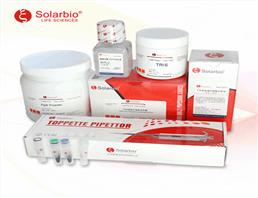氯离子测定试剂盒
Chloride Test Kit
产品介绍
水中氯离子是一种常见的无机阴离子,几乎所有的天然水都有氯离子存在,其含量变化范围很大,一般在河流、湖泊、沼泽等水体中氯离子的含量很低,而在海水、盐湖和一些地下水中氯离子的含量可以高达几十克每升。在日常生活生产中氯化物有着很重要的生理作用与工作用途,生活污水与工业废水中都含量有相当的氯离子,水中氯离子的含量过高也会对金属造成腐蚀,并会妨碍植物生长。
产品原理:硝酸银滴定法
检测范围:10-500mg/L
020-32078333-8846
Chloride Test Kit
Background of development
Sources of chloride
Chloride is a kind of common inorganic anion existing in water and wastewater. Almost all of the natural water contains chloride ions, its content varies greatly. The content of chloride ions normally at low levels in rivers, lakes and marshes; but in sea water, salt lakes and some groundwater, the content up to the level of tens of grams per liter. Chloride plays a very important physiological role and has important industrial uses in activities of human life. It contains a considerable amount of chloride ions in the sewage and industrial wastewater.
Significance of chloride test
If the content of chloride ion reach to 250mg/L in drinking water, and the corresponding cation is sodium, it will be felt salty; higher levels of chloride in water will damage metal pipes and buildings and impede plant growth.
Method
This method equals to the nitric acid titration method (GB5750-85). The principle is titration of chloride with silver nitrate using potassium chromate as indicator.
Quick and easy
Operating in accordance with the instructions, users can complete the chloride test independently without specialized training. Five minutes is enough to complete the analysis of one water sample.
Accurate and reliable
Determination results with this method are in accordance with the results with the standard method (GB5750-85). It can be used as an alternative method to the standard method.
The range of the determination: 10~500mg/L. If the concentration above this range, please repeat the operation after appropriate dilution of the water sample.
Quantitative packing
The kit can be used for 50 times. It is small, light and easy to carry.
Application areas
This product can be used in analysis of chloride in drinking water, surface water, groundwater and irrigation water.





